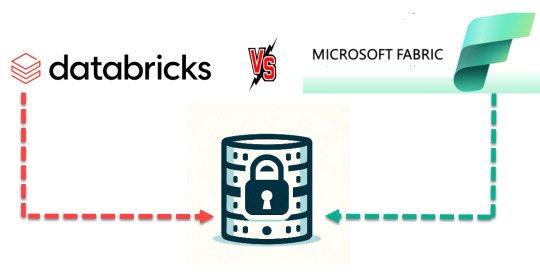#PySpark
Explore tagged Tumblr posts
Text

Wielding Big Data Using PySpark
Introduction to PySpark
PySpark is the Python API for Apache Spark, a distributed computing framework designed to process large-scale data efficiently. It enables parallel data processing across multiple nodes, making it a powerful tool for handling massive datasets.
Why Use PySpark for Big Data?
Scalability: Works across clusters to process petabytes of data.
Speed: Uses in-memory computation to enhance performance.
Flexibility: Supports various data formats and integrates with other big data tools.
Ease of Use: Provides SQL-like querying and DataFrame operations for intuitive data handling.
Setting Up PySpark
To use PySpark, you need to install it and set up a Spark session. Once initialized, Spark allows users to read, process, and analyze large datasets.
Processing Data with PySpark
PySpark can handle different types of data sources such as CSV, JSON, Parquet, and databases. Once data is loaded, users can explore it by checking the schema, summary statistics, and unique values.
Common Data Processing Tasks
Viewing and summarizing datasets.
Handling missing values by dropping or replacing them.
Removing duplicate records.
Filtering, grouping, and sorting data for meaningful insights.
Transforming Data with PySpark
Data can be transformed using SQL-like queries or DataFrame operations. Users can:
Select specific columns for analysis.
Apply conditions to filter out unwanted records.
Group data to find patterns and trends.
Add new calculated columns based on existing data.
Optimizing Performance in PySpark
When working with big data, optimizing performance is crucial. Some strategies include:
Partitioning: Distributing data across multiple partitions for parallel processing.
Caching: Storing intermediate results in memory to speed up repeated computations.
Broadcast Joins: Optimizing joins by broadcasting smaller datasets to all nodes.
Machine Learning with PySpark
PySpark includes MLlib, a machine learning library for big data. It allows users to prepare data, apply machine learning models, and generate predictions. This is useful for tasks such as regression, classification, clustering, and recommendation systems.
Running PySpark on a Cluster
PySpark can run on a single machine or be deployed on a cluster using a distributed computing system like Hadoop YARN. This enables large-scale data processing with improved efficiency.
Conclusion
PySpark provides a powerful platform for handling big data efficiently. With its distributed computing capabilities, it allows users to clean, transform, and analyze large datasets while optimizing performance for scalability.
For Free Tutorials for Programming Languages Visit-https://www.tpointtech.com/
2 notes
·
View notes
Text
Navigating the Data Landscape: A Deep Dive into ScholarNest's Corporate Training

In the ever-evolving realm of data, mastering the intricacies of data engineering and PySpark is paramount for professionals seeking a competitive edge. ScholarNest's Corporate Training offers an immersive experience, providing a deep dive into the dynamic world of data engineering and PySpark.
Unlocking Data Engineering Excellence
Embark on a journey to become a proficient data engineer with ScholarNest's specialized courses. Our Data Engineering Certification program is meticulously crafted to equip you with the skills needed to design, build, and maintain scalable data systems. From understanding data architecture to implementing robust solutions, our curriculum covers the entire spectrum of data engineering.
Pioneering PySpark Proficiency
Navigate the complexities of data processing with PySpark, a powerful Apache Spark library. ScholarNest's PySpark course, hailed as one of the best online, caters to both beginners and advanced learners. Explore the full potential of PySpark through hands-on projects, gaining practical insights that can be applied directly in real-world scenarios.
Azure Databricks Mastery
As part of our commitment to offering the best, our courses delve into Azure Databricks learning. Azure Databricks, seamlessly integrated with Azure services, is a pivotal tool in the modern data landscape. ScholarNest ensures that you not only understand its functionalities but also leverage it effectively to solve complex data challenges.
Tailored for Corporate Success
ScholarNest's Corporate Training goes beyond generic courses. We tailor our programs to meet the specific needs of corporate environments, ensuring that the skills acquired align with industry demands. Whether you are aiming for data engineering excellence or mastering PySpark, our courses provide a roadmap for success.
Why Choose ScholarNest?
Best PySpark Course Online: Our PySpark courses are recognized for their quality and depth.
Expert Instructors: Learn from industry professionals with hands-on experience.
Comprehensive Curriculum: Covering everything from fundamentals to advanced techniques.
Real-world Application: Practical projects and case studies for hands-on experience.
Flexibility: Choose courses that suit your level, from beginner to advanced.
Navigate the data landscape with confidence through ScholarNest's Corporate Training. Enrol now to embark on a learning journey that not only enhances your skills but also propels your career forward in the rapidly evolving field of data engineering and PySpark.
#data engineering#pyspark#databricks#azure data engineer training#apache spark#databricks cloud#big data#dataanalytics#data engineer#pyspark course#databricks course training#pyspark training
3 notes
·
View notes
Text
Top 15 Spark Interview Questions in less than 15 minutes Part-2 #bigdata #pyspark #interview
To enhance your career as a Cloud Data Engineer, Check … source
0 notes
Text
PySpark Interview Questions and Answers (2025) - Tpoint Tech
"PySpark Interview Questions and Answers" is a comprehensive guide designed to help candidates prepare for interviews involving Apache Spark's Python API. It covers key concepts, including RDDs, DataFrames, transformations, actions, and performance optimization. The guide provides practical answers, ensuring candidates are ready for both theoretical and hands-on questions.
0 notes
Text
Master PySpark for High-Speed Data Processing Online!
youtube
0 notes
Text
Python / PiSpark: Pivot on multiple rows
first… Let's create some data that needs pivoting. What is special about this data is that it has two columns (Product and Categories) in its granularity and that we want to pivot two values out (Amount and Quantity). # Make a dictionary list containing inventory data: data = [{"Product": 'Carrots', "Category": "Vegetable", "Quantity": 8, "Amount": 270}, {"Product": 'Broccoli', "Category":…
0 notes
Link
#BigData#DataLake#DeltaLake#DWH#ETL#PySpark#Python#Security#Spark#SQL#архитектура#безопасность#Большиеданные#обработкаданных
0 notes
Text
[Python] PySpark to M, SQL or Pandas
Hace tiempo escribí un artículo sobre como escribir en pandas algunos códigos de referencia de SQL o M (power query). Si bien en su momento fue de gran utilidad, lo cierto es que hoy existe otro lenguaje que representa un fuerte pie en el análisis de datos.
Spark se convirtió en el jugar principal para lectura de datos en Lakes. Aunque sea cierto que existe SparkSQL, no quise dejar de traer estas analogías de código entre PySpark, M, SQL y Pandas para quienes estén familiarizados con un lenguaje, puedan ver como realizar una acción con el otro.
Lo primero es ponernos de acuerdo en la lectura del post.
Power Query corre en capas. Cada linea llama a la anterior (que devuelve una tabla) generando esta perspectiva o visión en capas. Por ello cuando leamos en el código #“Paso anterior” hablamos de una tabla.
En Python, asumiremos a "df" como un pandas dataframe (pandas.DataFrame) ya cargado y a "spark_frame" a un frame de pyspark cargado (spark.read)
Conozcamos los ejemplos que serán listados en el siguiente orden: SQL, PySpark, Pandas, Power Query.
En SQL:
SELECT TOP 5 * FROM table
En PySpark
spark_frame.limit(5)
En Pandas:
df.head()
En Power Query:
Table.FirstN(#"Paso Anterior",5)
Contar filas
SELECT COUNT(*) FROM table1
spark_frame.count()
df.shape()
Table.RowCount(#"Paso Anterior")
Seleccionar filas
SELECT column1, column2 FROM table1
spark_frame.select("column1", "column2")
df[["column1", "column2"]]
#"Paso Anterior"[[Columna1],[Columna2]] O podría ser: Table.SelectColumns(#"Paso Anterior", {"Columna1", "Columna2"} )
Filtrar filas
SELECT column1, column2 FROM table1 WHERE column1 = 2
spark_frame.filter("column1 = 2") # OR spark_frame.filter(spark_frame['column1'] == 2)
df[['column1', 'column2']].loc[df['column1'] == 2]
Table.SelectRows(#"Paso Anterior", each [column1] == 2 )
Varios filtros de filas
SELECT * FROM table1 WHERE column1 > 1 AND column2 < 25
spark_frame.filter((spark_frame['column1'] > 1) & (spark_frame['column2'] < 25)) O con operadores OR y NOT spark_frame.filter((spark_frame['column1'] > 1) | ~(spark_frame['column2'] < 25))
df.loc[(df['column1'] > 1) & (df['column2'] < 25)] O con operadores OR y NOT df.loc[(df['column1'] > 1) | ~(df['column2'] < 25)]
Table.SelectRows(#"Paso Anterior", each [column1] > 1 and column2 < 25 ) O con operadores OR y NOT Table.SelectRows(#"Paso Anterior", each [column1] > 1 or not ([column1] < 25 ) )
Filtros con operadores complejos
SELECT * FROM table1 WHERE column1 BETWEEN 1 and 5 AND column2 IN (20,30,40,50) AND column3 LIKE '%arcelona%'
from pyspark.sql.functions import col spark_frame.filter( (col('column1').between(1, 5)) & (col('column2').isin(20, 30, 40, 50)) & (col('column3').like('%arcelona%')) ) # O spark_frame.where( (col('column1').between(1, 5)) & (col('column2').isin(20, 30, 40, 50)) & (col('column3').contains('arcelona')) )
df.loc[(df['colum1'].between(1,5)) & (df['column2'].isin([20,30,40,50])) & (df['column3'].str.contains('arcelona'))]
Table.SelectRows(#"Paso Anterior", each ([column1] > 1 and [column1] < 5) and List.Contains({20,30,40,50}, [column2]) and Text.Contains([column3], "arcelona") )
Join tables
SELECT t1.column1, t2.column1 FROM table1 t1 LEFT JOIN table2 t2 ON t1.column_id = t2.column_id
Sería correcto cambiar el alias de columnas de mismo nombre así:
spark_frame1.join(spark_frame2, spark_frame1["column_id"] == spark_frame2["column_id"], "left").select(spark_frame1["column1"].alias("column1_df1"), spark_frame2["column1"].alias("column1_df2"))
Hay dos funciones que pueden ayudarnos en este proceso merge y join.
df_joined = df1.merge(df2, left_on='lkey', right_on='rkey', how='left') df_joined = df1.join(df2, on='column_id', how='left')Luego seleccionamos dos columnas df_joined.loc[['column1_df1', 'column1_df2']]
En Power Query vamos a ir eligiendo una columna de antemano y luego añadiendo la segunda.
#"Origen" = #"Paso Anterior"[[column1_t1]] #"Paso Join" = Table.NestedJoin(#"Origen", {"column_t1_id"}, table2, {"column_t2_id"}, "Prefijo", JoinKind.LeftOuter) #"Expansion" = Table.ExpandTableColumn(#"Paso Join", "Prefijo", {"column1_t2"}, {"Prefijo_column1_t2"})
Group By
SELECT column1, count(*) FROM table1 GROUP BY column1
from pyspark.sql.functions import count spark_frame.groupBy("column1").agg(count("*").alias("count"))
df.groupby('column1')['column1'].count()
Table.Group(#"Paso Anterior", {"column1"}, {{"Alias de count", each Table.RowCount(_), type number}})
Filtrando un agrupado
SELECT store, sum(sales) FROM table1 GROUP BY store HAVING sum(sales) > 1000
from pyspark.sql.functions import sum as spark_sum spark_frame.groupBy("store").agg(spark_sum("sales").alias("total_sales")).filter("total_sales > 1000")
df_grouped = df.groupby('store')['sales'].sum() df_grouped.loc[df_grouped > 1000]
#”Grouping” = Table.Group(#"Paso Anterior", {"store"}, {{"Alias de sum", each List.Sum([sales]), type number}}) #"Final" = Table.SelectRows( #"Grouping" , each [Alias de sum] > 1000 )
Ordenar descendente por columna
SELECT * FROM table1 ORDER BY column1 DESC
spark_frame.orderBy("column1", ascending=False)
df.sort_values(by=['column1'], ascending=False)
Table.Sort(#"Paso Anterior",{{"column1", Order.Descending}})
Unir una tabla con otra de la misma característica
SELECT * FROM table1 UNION SELECT * FROM table2
spark_frame1.union(spark_frame2)
En Pandas tenemos dos opciones conocidas, la función append y concat.
df.append(df2) pd.concat([df1, df2])
Table.Combine({table1, table2})
Transformaciones
Las siguientes transformaciones son directamente entre PySpark, Pandas y Power Query puesto que no son tan comunes en un lenguaje de consulta como SQL. Puede que su resultado no sea idéntico pero si similar para el caso a resolver.
Analizar el contenido de una tabla
spark_frame.summary()
df.describe()
Table.Profile(#"Paso Anterior")
Chequear valores únicos de las columnas
spark_frame.groupBy("column1").count().show()
df.value_counts("columna1")
Table.Profile(#"Paso Anterior")[[Column],[DistinctCount]]
Generar Tabla de prueba con datos cargados a mano
spark_frame = spark.createDataFrame([(1, "Boris Yeltsin"), (2, "Mikhail Gorbachev")], inferSchema=True)
df = pd.DataFrame([[1,2],["Boris Yeltsin", "Mikhail Gorbachev"]], columns=["CustomerID", "Name"])
Table.FromRecords({[CustomerID = 1, Name = "Bob", Phone = "123-4567"]})
Quitar una columna
spark_frame.drop("column1")
df.drop(columns=['column1']) df.drop(['column1'], axis=1)
Table.RemoveColumns(#"Paso Anterior",{"column1"})
Aplicar transformaciones sobre una columna
spark_frame.withColumn("column1", col("column1") + 1)
df.apply(lambda x : x['column1'] + 1 , axis = 1)
Table.TransformColumns(#"Paso Anterior", {{"column1", each _ + 1, type number}})
Hemos terminado el largo camino de consultas y transformaciones que nos ayudarían a tener un mejor tiempo a puro código con PySpark, SQL, Pandas y Power Query para que conociendo uno sepamos usar el otro.
#spark#pyspark#python#pandas#sql#power query#powerquery#notebooks#ladataweb#data engineering#data wrangling#data cleansing
0 notes
Video
youtube
Part 2 Interview - Why Spark is often preferred over MapReduce
0 notes
Text
#Azure Data Factory#azure data factory interview questions#adf interview question#azure data engineer interview question#pyspark#sql#sql interview questions#pyspark interview questions#Data Integration#Cloud Data Warehousing#ETL#ELT#Data Pipelines#Data Orchestration#Data Engineering#Microsoft Azure#Big Data Integration#Data Transformation#Data Migration#Data Lakes#Azure Synapse Analytics#Data Processing#Data Modeling#Batch Processing#Data Governance
1 note
·
View note
Text
Google's Data Engineering workflow for YouTube Recommendation system! #dataengineering #pyspark
Join this channel to get access to perks: – – – Book a … source
0 notes
Text
Unlock Data Governance: Revolutionary Table-Level Access in Modern Platforms
Dive into our latest blog on mastering data governance with Microsoft Fabric & Databricks. Discover key strategies for robust table-level access control and secure your enterprise's data. A must-read for IT pros! #DataGovernance #Security

View On WordPress
#Access Control#Azure Databricks#Big data analytics#Cloud Data Services#Data Access Patterns#Data Compliance#Data Governance#Data Lake Storage#Data Management Best Practices#Data Privacy#Data Security#Enterprise Data Management#Lakehouse Architecture#Microsoft Fabric#pyspark#Role-Based Access Control#Sensitive Data Protection#SQL Data Access#Table-Level Security
0 notes
Text
Greetings from Ashra Technologies we are hiring
#ashra#ashratechnologies#jobs#hiring#jobalert#jobsearch#jobhunt#recruiting#recruitingpost#experience#azure#azuredatabricks#azuresynapse#azuredatafactory#azurefunctions#logicapps#scala#apachespark#python#pyspark#sql#azuredevops#pune#chennai#hybrid#hybridwork#linkedin#linkedinprofessionals#linkedinlearning#linkedinads
0 notes
Text
Mastering PySpark: A Comprehensive Certification Course and Effective Training Methods
Are you eager to delve into the world of big data analytics and data processing? Look no further than PySpark, a powerful tool for efficiently handling large-scale data. In this article, we will explore the PySpark certification course and its training methods, providing you with the essential knowledge to master this transformative technology.
Understanding PySpark: Unveiling the Power of Big Data
PySpark is a Python library for Apache Spark, an open-source, distributed computing system designed for big data processing and analysis. It enables seamless integration with Python, allowing developers to leverage the vast capabilities of Spark using familiar Python programming paradigms. PySpark empowers data scientists and analysts to process vast amounts of data efficiently, making it an invaluable tool in today's data-driven landscape.
The PySpark Certification Course: A Pathway to Expertise
Enrolling in a PySpark certification course can be a game-changer for anyone looking to enhance their skills in big data analytics. These courses are meticulously designed to provide a comprehensive understanding of PySpark, covering its core concepts, advanced features, and practical applications. The curriculum typically includes:
Introduction to PySpark: Understanding the basics of PySpark, its architecture, and key components.
Data Processing with PySpark: Learning how to process and manipulate data using PySpark's powerful capabilities.
Machine Learning with PySpark: Exploring how PySpark facilitates machine learning tasks, allowing for predictive modeling and analysis.
Real-world Applications and Case Studies: Gaining hands-on experience through real-world projects and case studies.
Training Methods: Tailored for Success
The training methods employed in PySpark certification courses are designed to maximize learning and ensure participants grasp the concepts effectively. These methods include:
Interactive Lectures: Engaging lectures delivered by experienced instructors to explain complex concepts in an easily digestible manner.
Hands-on Labs and Projects: Practical exercises and projects to apply the learned knowledge in real-world scenarios, reinforcing understanding.
Collaborative Learning: Group discussions, teamwork, and peer interaction to foster a collaborative learning environment.
Regular Assessments: Periodic quizzes and assessments to evaluate progress and identify areas for improvement.
FAQs about PySpark Certification Course
1. What is PySpark?
PySpark is a Python library for Apache Spark, providing a seamless interface to integrate Python with the Spark framework for efficient big data processing.
2. Why should I opt for a PySpark certification course?
A PySpark certification course equips you with the skills needed to analyze large-scale data efficiently, making you highly valuable in the data analytics job market.
3. Are there any prerequisites for enrolling in a PySpark certification course?
While prior knowledge of Python can be beneficial, most PySpark certification courses start from the basics, making them accessible to beginners as well.
4. How long does a typical PySpark certification course last?
The duration of a PySpark certification course can vary, but it typically ranges from a few weeks to a few months, depending on the depth of the curriculum.
5. Can I access course materials and resources after completing the course?
Yes, many institutions provide access to course materials, resources, and alumni networks even after completing the course to support continued learning and networking.
6. Will I receive a certificate upon course completion?
Yes, upon successful completion of the PySpark certification course, you will be awarded a certificate, validating your proficiency in PySpark.
7. Is PySpark suitable for individuals without a background in data science?
Absolutely! PySpark courses are designed to accommodate individuals from diverse backgrounds, providing a structured learning path for beginners.
8. What career opportunities can a PySpark certification unlock?
A PySpark certification can open doors to various career opportunities, including data analyst, data engineer, machine learning engineer, and more, in industries dealing with big data.
In conclusion, mastering PySpark through a well-structured certification course can significantly enhance your career prospects in the ever-evolving field of big data analytics. Invest in your education, embrace the power of PySpark, and unlock a world of possibilities in the realm of data processing and analysis.

1 note
·
View note
Text

Kaara We are Hiring for the position of "Lead Data Engineer"
Exp:- 7+ Years Location:- Hyderabad (WFO) Notice:- 15 days
Required Skills:-
AWS Glue
AWS Lambda
Python & Pyspark
Snowflake
Interested Candidates Share your portfolio / CV to [email protected]
Reach us: www.kaaratech.com
#kaaratech#aws#python#pyspark#snowflake#technicaljobs#wearehiring#jobs#jobvacancy#hyderabadjobs#jobseekers#microsoft
0 notes
Link
0 notes